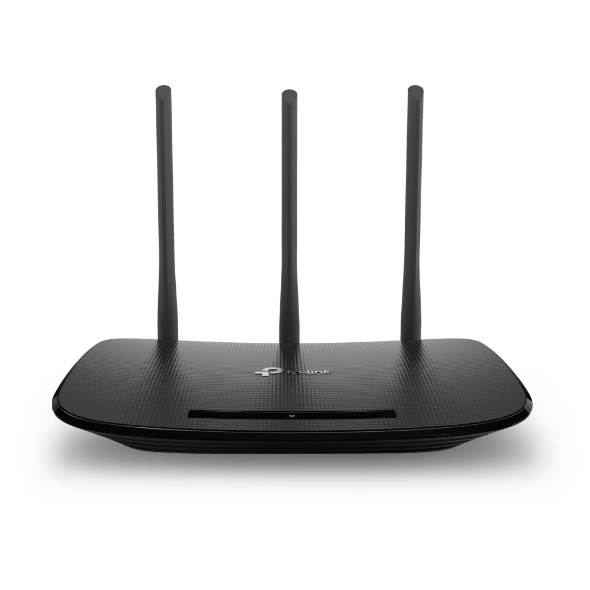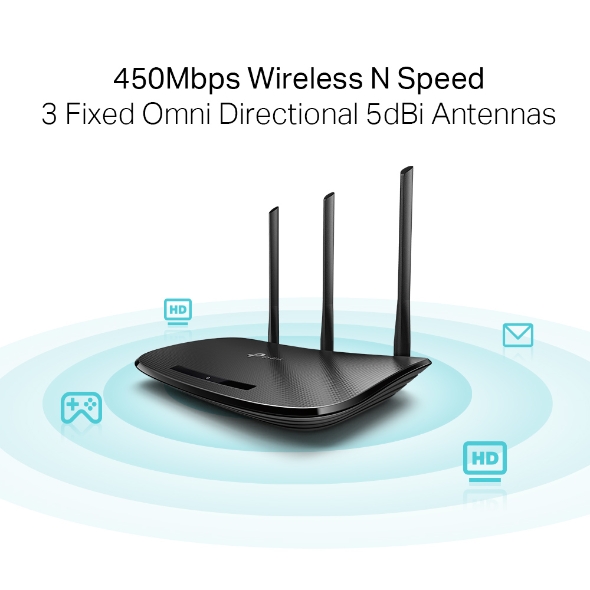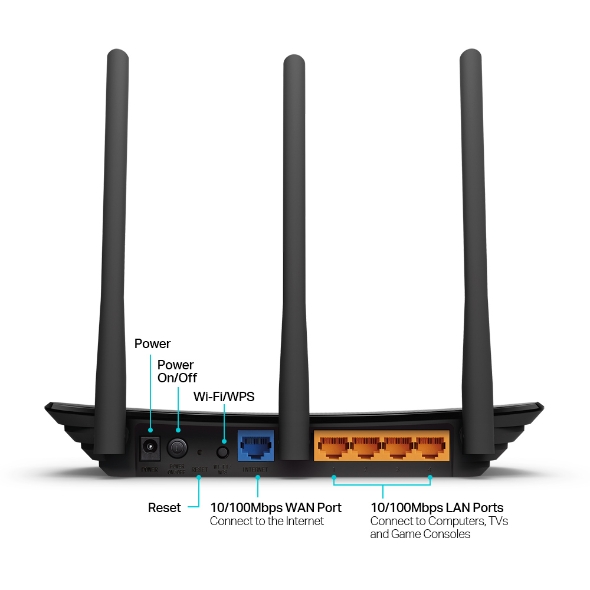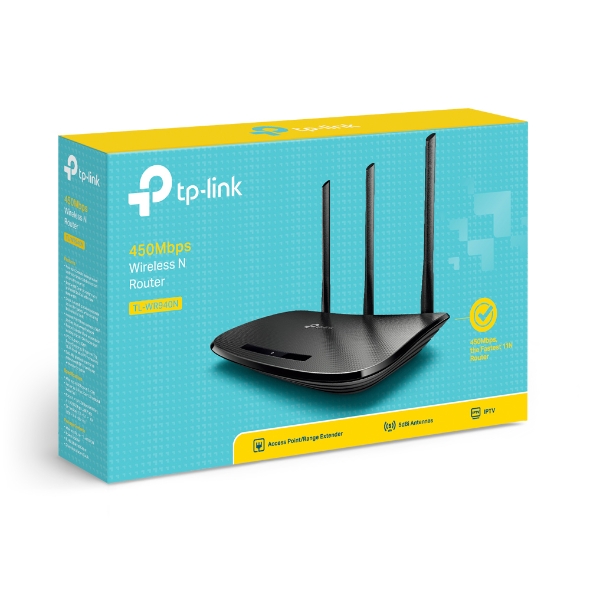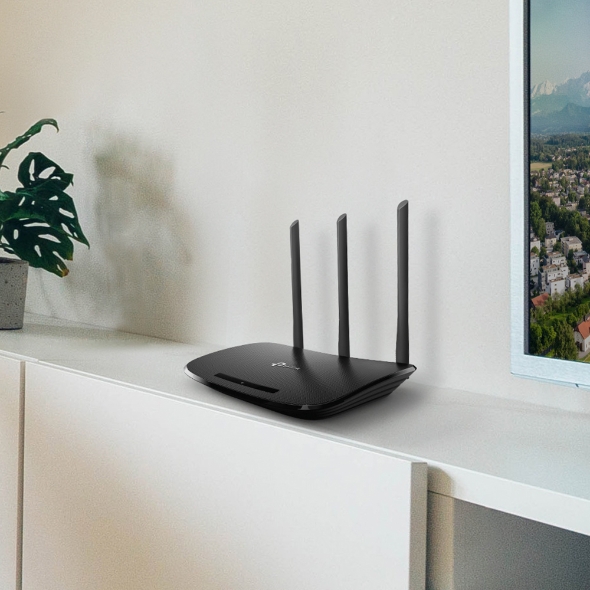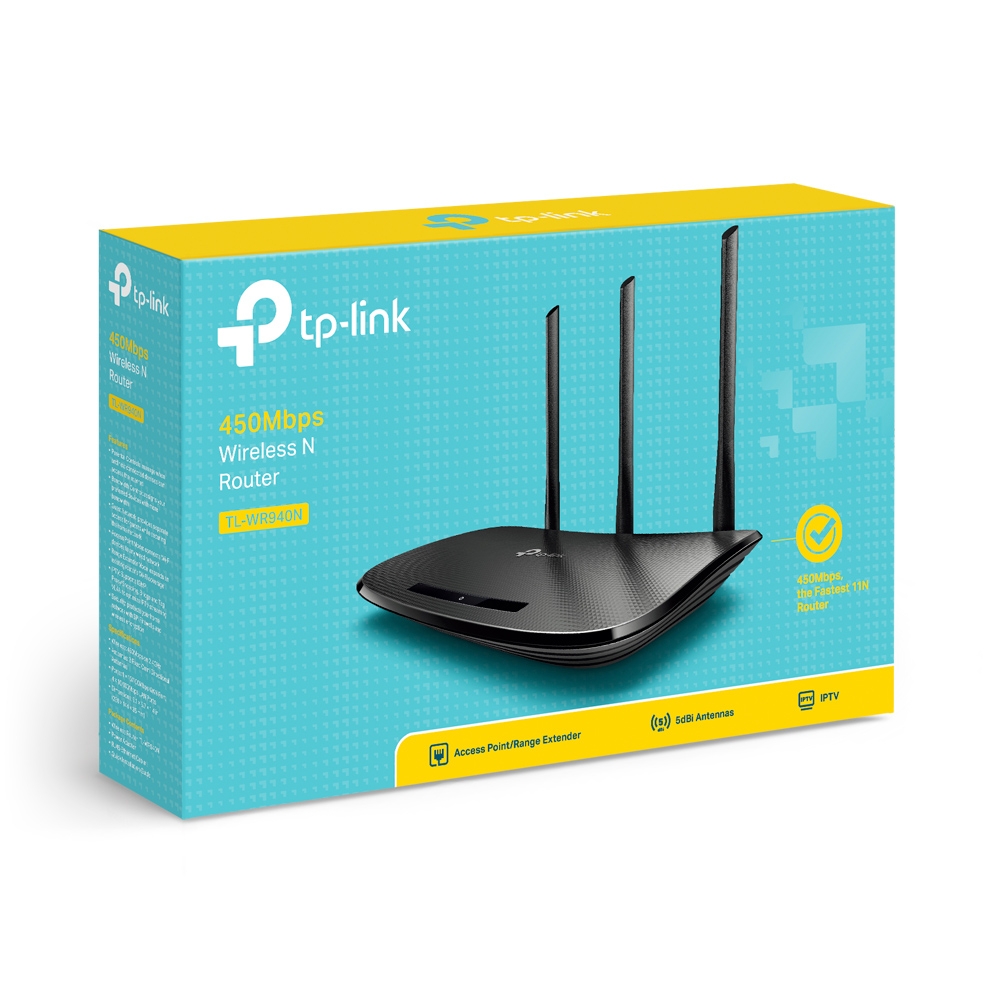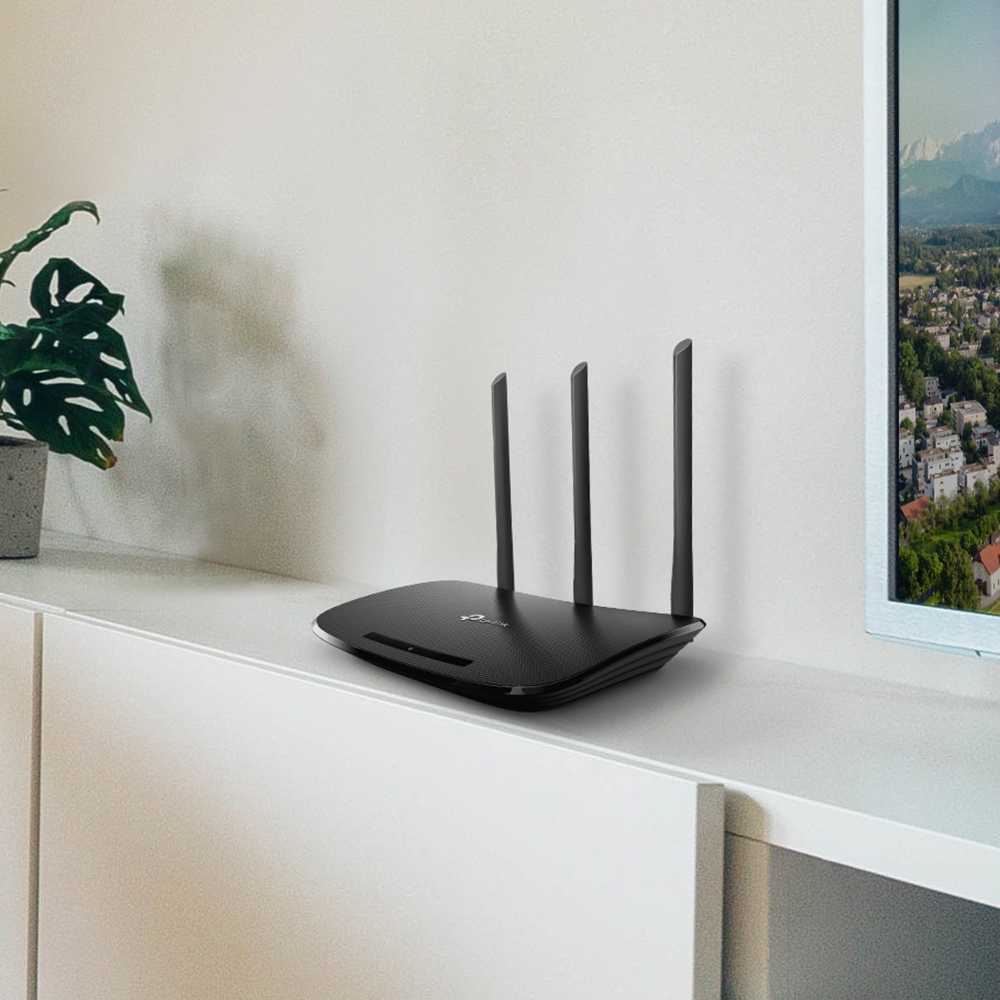450Mbps Wireless N Router
- 450Mbps wireless speed ideal for interruption sensitive applications like HD video streaming
- Three antennas increase the wireless robustness and stability
- Supports 3 modes: Router, Range Extender and Access Point modes
- Easy wireless security encryption at a push of WPS button
- Bandwidth Control: assigns your preferred devices with more bandwidth
Fast, Accessible Wi-Fi for Your Daily Delight
450Mbps Wireless N Speed
TL-WR940N
450Mbps Wireless N Speed - Fast Download Speed
TP-Link’s TL-WR940N is a high speed solution that is compatible with IEEE 802.11b/g/n. Based on 802.11n technology, TL-WR940N gives users wireless performance at up to 450Mbps, which can meet your most demanding home networking needs, such as HD streaming, online gaming and large files downloading.
-
1. Router Mode
Connect to the Ethernet to instantly create a private wireless network and share internet access to all your Wi-Fi devices.
-
2. Access Point Mode
Transform your existing wired network
to a wireless one. -
3. Range Extender Mode
Boost the existing wireless coverage
in your room.
-
Internet
TL-WR940N
Laptops
Tablets
-
Internet
Host
RouterTL-WR940N
Laptops
Tablets
-
Internet
Host
RouterTL-WR940N
Desktop
Phones
Easy Setup and Use
Set up the TL-WR940N in minutes thanks to its intuitive web interface and the powerful Tether app. Tether also lets you manage its network settings from any Android or iOS device, including parental controls and access control.
-
Easy Setup
-
WPS button
-
Guest Network
-
Tether APP
| Standards and Protocols | Wi-Fi 4IEEE 802.11n/b/g 2.4 GHz |
|---|---|
| WiFi Speeds | N4502.4 GHz: 450 Mbps (802.11n) |
| WiFi Range | 2 Bedroom Houses 3× Fixed AntennasMultiple antennas form a signal-boosting array to cover more directions and large areas |
| WiFi Capacity | Legacy |
| Working Modes | Router ModeAccess Point ModeRange Extender Mode |
| Network Security | SPI FirewallAccess ControlIP & MAC BindingApplication Layer Gateway |
|---|---|
| Guest Network | 1× 2.4 GHz Guest Network |
| WiFi Encryption | WEPWPAWPA2WPA/WPA2-Enterprise (802.1x) |
| Processor | Single-Core CPU |
|---|---|
| Ethernet Ports | 1× 10/100 Mbps WAN Port4× 10/100 Mbps LAN Ports |
| Buttons | WPS/Wi-Fi ButtonPower On/Off ButtonReset Button |
| Power | 9 V ⎓ 0.6 A |
| Protocols | IPv4IPv6 |
|---|---|
| Parental Controls | URL FilteringTime Controls |
| WAN Types | Dynamic IPStatic IPPPPoEPPTPL2TP |
| Quality of Service | QoS by Device |
| NAT Forwarding | VIrtual ServerPort ForwardingPort TriggeringDMZUPnP |
| IPTV | IGMP ProxyIGMP Snooping |
| DHCP | Address ReservationDHCP Client ListServer |
| DDNS | NO-IPComexDynDNS |
| Management Features | Tether AppWebpageCheck Web Emulator> |
| System Requirements | Internet Explorer 11+, Firefox 12.0+, Chrome 20.0+, Safari 4.0+, or other JavaScript-enabled browserCable or DSL Modem (if needed)Subscription with an internet service provider (for internet access) |
|---|---|
| Certifications | FCC, CE, RoHS |
| Environment | Operating Temperature: 0℃~40℃ (32℉ ~104℉)Storage Temperature: -40℃~70℃ (-40℉ ~158℉)Operating Humidity: 10%~90% non-condensingStorage Humidity: 5%~90% non-condensing |
| WiFi Transmission Power | CE:<20dBm(2.4GHz)FCC:<30dBm |
|---|---|
| WiFi Reception Sensitivity | 450M: -68dBm@10% PER216M: -70dBm@10% PER130M: -78dBm@10% PER54M: -74dBm@10% PER11M: -85dBm@8% PER6M: -88dBm@10% PER1M: -93dBm@8% PER |
| Dimensions (W×D×H) | 9.1 × 5.7 × 1.4 in(230 × 144 × 35mm) |
|---|---|
| Package Content | Wi-Fi Router TL-WR940NPower AdapterRJ45 Ethernet CableQuick Installation Guide |
*Maximum wireless signal rates are the physical rates derived from IEEE Standard 802.11 specifications. Actual wireless data throughput and wireless coverage are not guaranteed and will vary as a result of 1) environmental factors, including building materials, physical objects, and obstacles, 2) network conditions, including local interference, volume and density of traffic, product location, network complexity, and network overhead, and 3) client limitations, including rated performance, location, connection, quality, and client condition.
